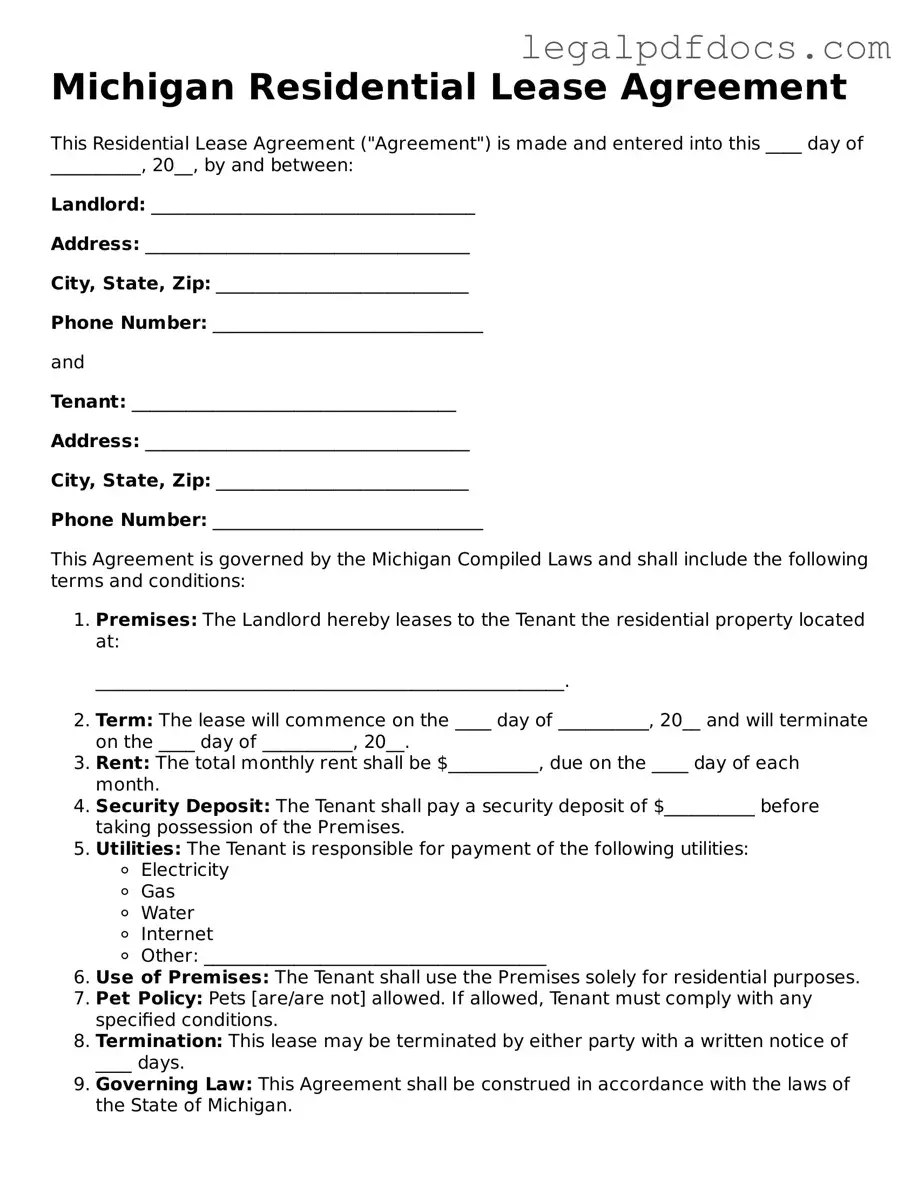Official Residential Lease Agreement Form for Michigan
The Michigan Residential Lease Agreement is a legal document that outlines the terms and conditions between a landlord and a tenant for renting residential property in Michigan. This form serves to protect the rights of both parties while ensuring clear communication regarding rental obligations. Understanding this agreement is crucial for a smooth rental experience, so take action now by filling out the form below.
Open Residential Lease Agreement Editor Here
